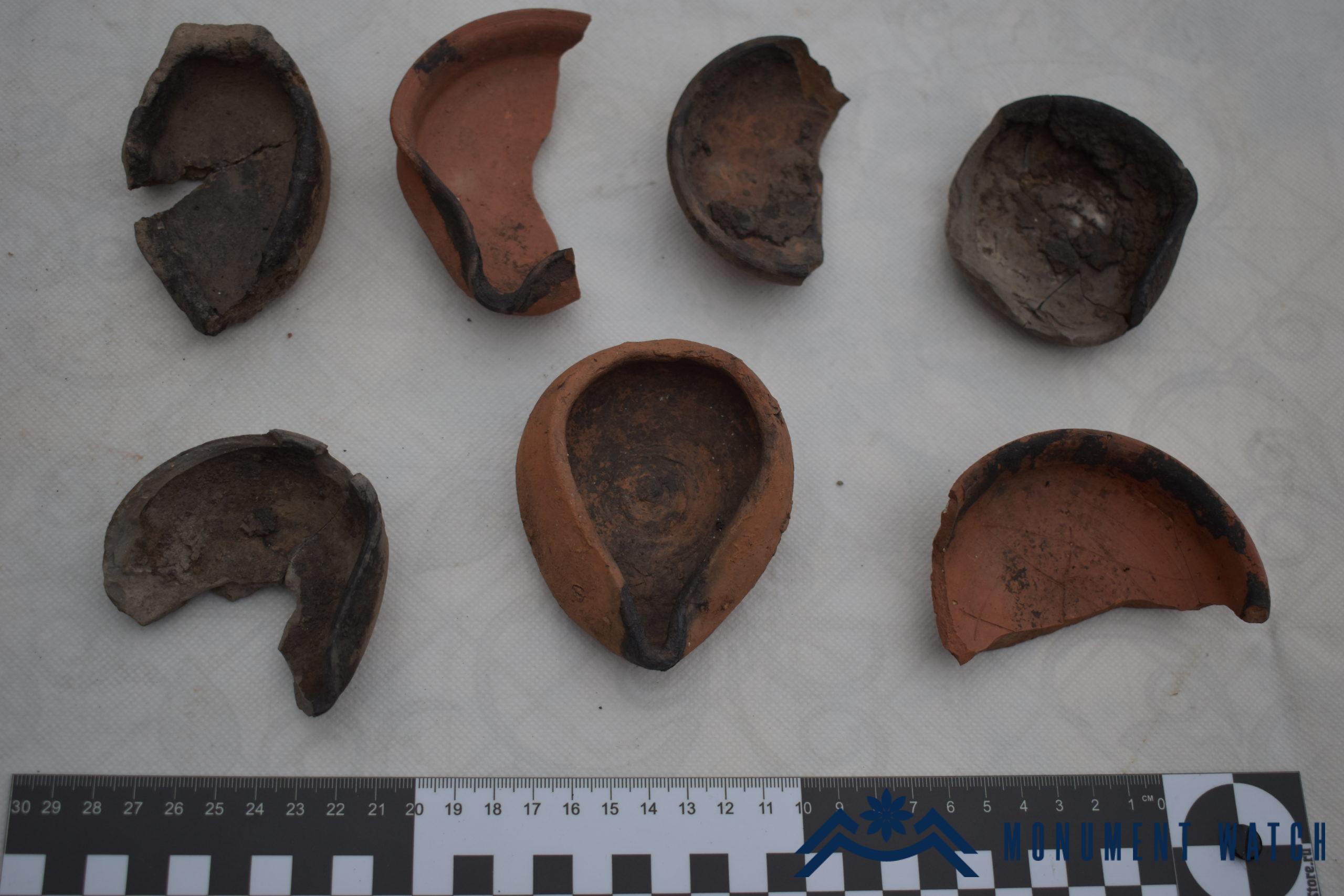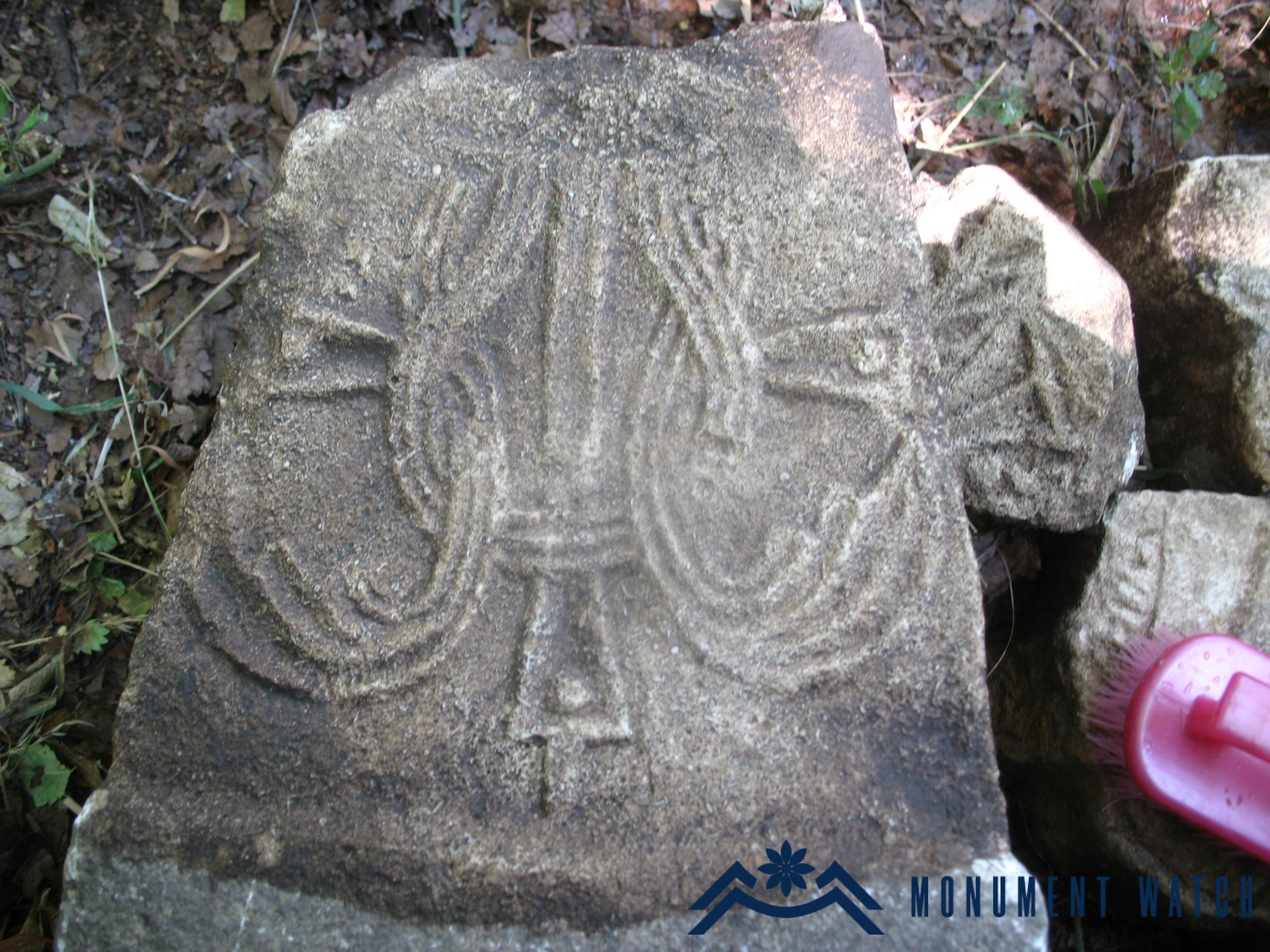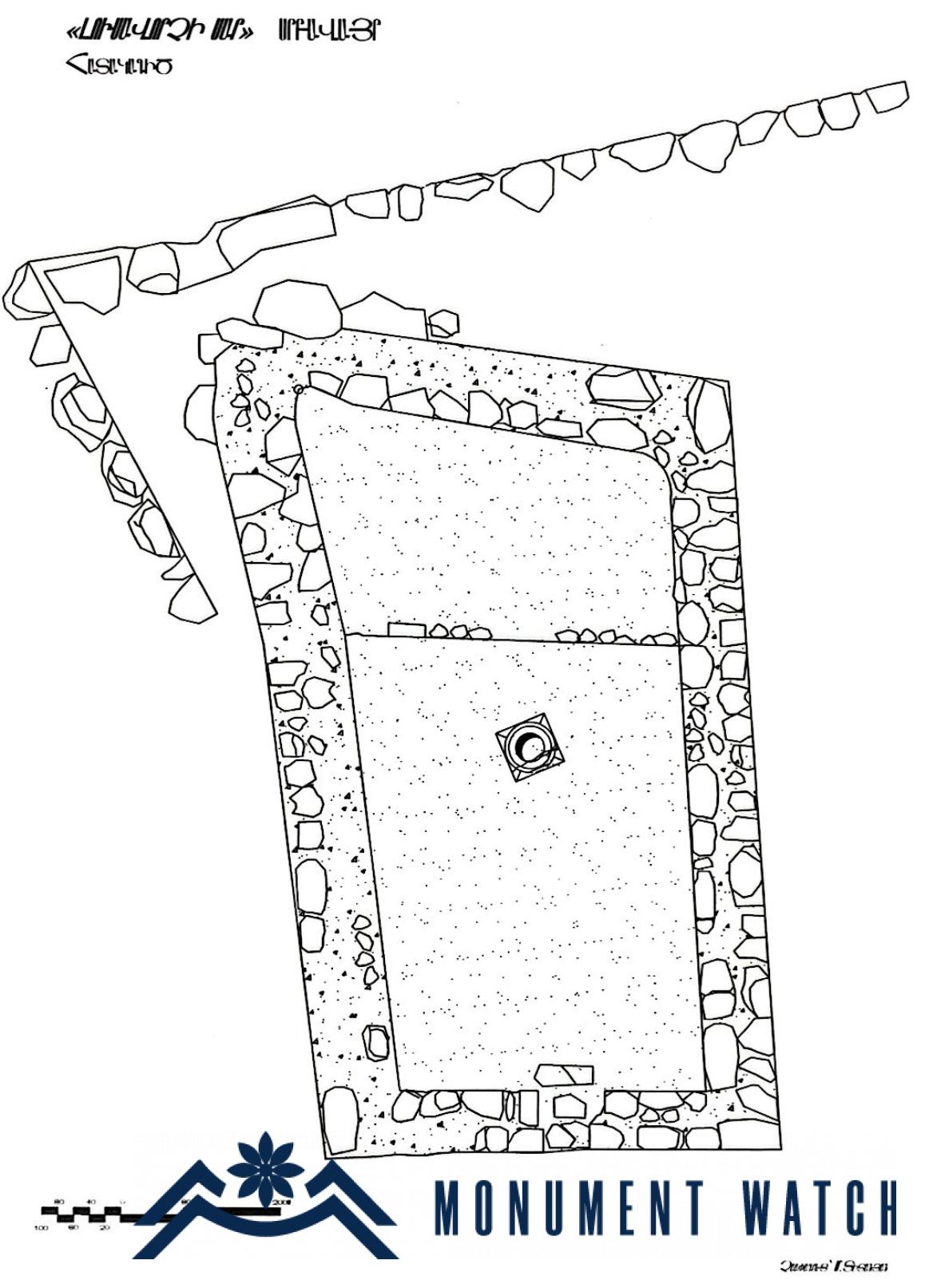Surb Lusavorich monastery complex
Location
The monument is located on top of a cone-shaped wooded hill in the eastern part of the border village of Sos, Martuni region (Fig. 1).

Historical overview
There is little historical information available about the monument. Makar Barkhutareants, who saw the ruins of the church in the second half of the nineteenth century, noted that "Saint Gregory the Illuminator, during his preaching and establishing the churches, climbed this mountain at night and prayed till the morning," according to legend (Barkhutareants 1895, 115).
Only the building's foundations can still be seen on the site.
Partial excavation work was conducted in the monument's vicinity in 2019 and 2020. (Expedition leader: candidate of historical sciences V. Safaryan, architect: M. Titanyan).
Materials discovered during the sanctuary excavations allow us to speculate on the sanctuary's early Christian origins (Safaryan, Titanyan, 2019, 38-40). The stone torus-shaped anchor in the center of the excavated site, on which candles are lit, is one of them (Fig. 2). Additionally, fragments of numerous shells, tiles, lamps (Fig. 3), early Christian stone pitchers, and other architectural elements were discovered during the excavations (Figs. 4-5).
Architectural-compositional examination
Only after archaeological work was completed, the monument was examined from an architectural standpoint. A building was opened from west to east after the sanctuary was excavated, and its floor was raised on the eastern side (Safaryan, Titanyan 2019, 38). Due to the structure's orientation and spatial configuration, as well as several architectural elements found during nearby excavations that belonged to the structure, we can conclude that it is most likely a church.
It has an irregular plan measuring 9.7 x 6.0 meters and is constructed with a rough stone laying without mortar (Figs. 6-8).
In addition to the structure itself, excavations have uncovered the remains of other buildings that are situated on various horizons, fit into the surrounding landscape, and likely date from various periods despite giving the impression of being one cohesive structure (Safaryan, Titanyan 2019). (Fig. 9).
The condition before, during, and after the war
The church was fully standing before the war. No details about the monument are known, neither during nor after the war.
Bibliographic examination
There are few historical sources about the church. The works of Makar Barkhutareants are our primary source of information (Barkhutaryants 1895, 115-116).
Bibliography
- Barkhutareants, 1895- Barkhutareants M., Artsakh, Baku, Aror.
- Safaryan, Titanyan 2019 - Safaryan V., Titanyan M., The first results of the archaeological researches of the pilgrimage site “Mount Lusavorch “of Sos village, scientific bulletin of Artsakh State University, Stepanakert, 36–44.
Surb Lusavorich monastery complex
Artsakh








